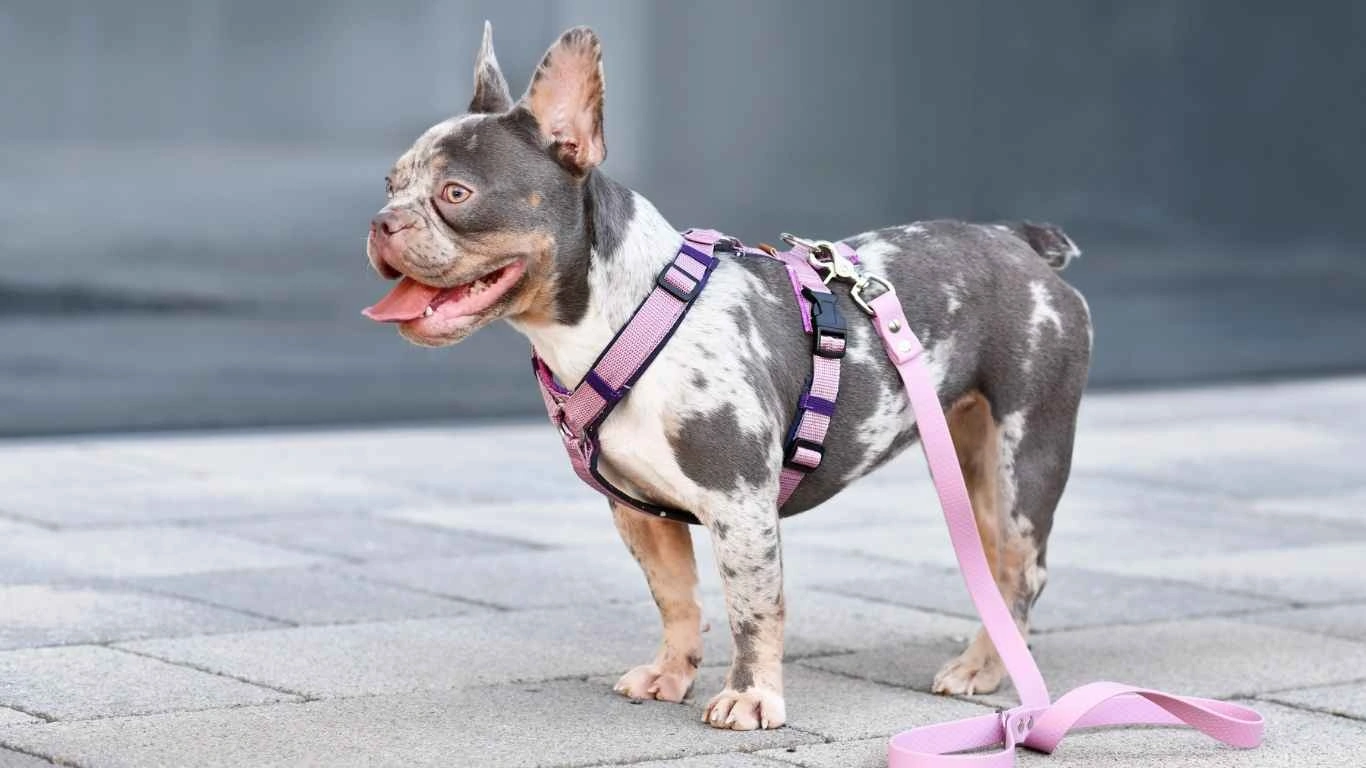Discover the Best Dog Food for Faster Muscle Recovery Today
If you’re anything like me, you’ve probably watched a limping pup struggle after a big day of fetch, hiking, or recovering from surgery. As someone who’s worked hands-on as an Animal Care Specialist in both pet clinics and shelters, I’ve seen just how important the right nutrition is—especially when it comes to the best dog food for faster muscle recovery. Let me tell you, it’s not just about protein content. There’s a whole lot more going on beneath the surface of that kibble or can.
What Muscle Recovery Really Looks Like for Dogs

When people hear “muscle recovery,” they often picture a bodybuilder downing a protein shake. But for our four-legged buddies, recovery is about more than just bulking up. It’s about reducing inflammation, replenishing energy, rebuilding tissue, and yes—managing pain and stress levels.
In my experience working with dogs post-surgery or those rescued from neglect, nutrition often played a bigger role in recovery than meds alone. And when you find the right food, the difference is noticeable. We’re talking about dogs regaining their zoomies, bouncing back from injuries, and getting their tail wags back faster.
Why You Shouldn’t Rely on Generic Dog Food
Here’s the thing—most off-the-shelf dog foods just aren’t built for recovery. They’re formulated for general health, which is fine for a lazy Sunday snoozer, but not so much for an active or injured dog. They might be high in calories but lacking in the quality protein, amino acids, and anti-inflammatory nutrients needed for true healing.
I’ve seen dogs stall in recovery just because their diet was lacking. When we upgraded their meals, it was like flipping a switch. Within days, we’d see increased energy, reduced limping, and even better moods. That’s how vital targeted nutrition can be.
Top Nutrients That Support Faster Muscle Recovery

If you’re trying to optimize your pup’s healing process, these are the big players you want to look out for in their food:
- High-Quality Protein: Think salmon, chicken, turkey, or beef. Protein is crucial for rebuilding muscle tissue.
- Omega-3 Fatty Acids: Found in fish oils, these help reduce inflammation and support joint health.
- Branched-Chain Amino Acids (BCAAs): These are the building blocks of muscle regeneration and work wonders post-exercise or injury.
- Glucosamine and Chondroitin: Especially helpful for older dogs or those with joint damage.
- Vitamin E and C: Antioxidants that help repair cells and reduce oxidative stress.
I remember one senior boxer named Gus we had at the shelter—his hips were in rough shape. Once we transitioned him to a high-protein diet with fish oil and joint supplements, his improvement was wild. Within a couple of weeks, he was climbing stairs again. I still get choked up thinking about it.
Watch Out for These Common Ingredients
On the flip side, here’s a quick list of what you don’t want to see in dog food, especially when healing is the goal:
- Meat by-products: These are low-quality protein sources and don’t provide the nutrients your dog needs for proper recovery.
- Excess carbs or fillers: Things like corn, soy, and wheat just bulk up the food without offering healing support.
- Artificial preservatives: Chemicals like BHA, BHT, and ethoxyquin can actually increase inflammation.
Trust me—less is more. Cleaner, simpler ingredient lists tend to yield better results when healing is the goal.
How a Tailored Diet Helped One Injured Pup Bounce Back

Let me share a quick story about Luna, a pit bull mix who came into our clinic after a bad leg injury. She was underweight, anxious, and barely moving. Her owner had good intentions, but she was feeding Luna generic food that wasn’t cutting it. We switched her to a high-protein, fish-based diet with added glucosamine and probiotics. The change? Night and day. Luna’s energy shot up, her coat started shining, and best of all—her limp faded within a couple of weeks.
Nutrition was the game-changer. And it can be for your dog, too.
How to Choose the Best Dog Food for Faster Muscle Recovery

So, now that we’ve talked about why recovery-focused nutrition matters, let’s get into the nitty-gritty of actually choosing the best dog food for faster muscle recovery. There are a ton of options out there—raw, dry, canned, freeze-dried—you name it. And trust me, I’ve tried ‘em all with the shelter pups and clinic patients over the years. What works for one dog may not work for another, so let’s break it down based on your dog’s specific needs and situation.
1. Read the Ingredient List Like a Pro
One of the most important things I’ve learned from working with veterinary nutritionists is how to read labels like a hawk. The first few ingredients are everything. You want to see named proteins right up front—like chicken, turkey, beef, or salmon. If it just says “meat” or “poultry,” skip it. That’s code for mystery meat in most cases.
Bonus points if it contains things like:
- Eggs: A great, bioavailable protein source dogs digest easily.
- Sweet potatoes: Great for energy without the crash.
- Blueberries and spinach: Excellent natural antioxidants for cellular repair.
Also, don’t be afraid of fat—dogs need it, especially during recovery. Just make sure it’s coming from quality sources like chicken fat or fish oil, not vague “animal fat” fillers.
2. Match the Diet to the Recovery Stage
In my experience, what you feed your dog the first few days post-injury or surgery should be a little different than what they get during long-term recovery. Immediately after the incident, I tend to recommend foods that are easier on the digestive system but still nutrient-dense. That might mean lightly cooked meals or high-moisture wet food with extra omegas and amino acids.
As your dog starts regaining energy, that’s the time to gradually introduce more calorie-dense meals and higher protein content. For one active husky mix we had at the shelter, we moved him from a bland boiled chicken diet to a salmon-based performance kibble over a couple weeks. It kept him lean but gave him enough fuel to rebuild muscle without gaining fat.
Raw vs. Kibble vs. Home-Cooked: What’s Best?

This debate gets heated in pet circles. I’ve met pet parents who swear by raw food, while others lean into holistic homemade recipes. Then there are those who love the convenience of kibble—and honestly, all three can work depending on how you do it.
Raw Diets
When done correctly (key word: correctly), raw food can be fantastic for recovery. We had a lab mix named Toby on a raw plan after a TPLO surgery, and his vet was amazed at how fast his mobility came back. But—and this is a big one—raw food needs to be balanced by a professional. It’s easy to underdo certain nutrients like calcium or iodine, which can set back recovery instead of helping.
High-Quality Kibble
There’s absolutely nothing wrong with kibble if you pick the right one. Look for brands that are transparent about sourcing and formulation. In our clinic, we leaned on brands that used fresh protein sources, avoided fillers, and had third-party testing for safety. Pairing good kibble with a topper (like bone broth or sardines) can really boost its recovery power.
Home-Cooked Meals
This is a sweet spot for many pet parents—if you have the time. I used to batch cook for a recovering German shepherd at the shelter. Her meals included lean turkey, brown rice, pumpkin, and steamed spinach. She licked that bowl clean every time, and her coat went from dry and dull to buttery soft in weeks. Just make sure to talk to a vet or pet nutritionist so you’re not accidentally skipping essential nutrients.
Supplements That Can Give Your Dog a Boost

Even the best dog food for faster muscle recovery sometimes needs a little backup. Here are some go-to supplements I’ve seen work wonders over the years:
- Omega-3s (Fish Oil): Natural anti-inflammatory that supports joints and muscle recovery.
- Probiotics: A healthy gut helps the body absorb nutrients better.
- Joint supplements: Look for glucosamine, MSM, and chondroitin—especially helpful for older or post-surgery dogs.
- Collagen: Supports connective tissue, which is often overlooked but crucial in recovery.
One of my favorite stories is about a beagle who couldn’t jump on the couch anymore after a back strain. His owners added a combo of collagen and omega-3s to his diet, and within three weeks, he was back to his favorite sunspot—on top of the couch, of course.
Supplements aren’t a substitute for quality food, but when used right, they can seriously speed up healing time.
Practical Tips to Support Your Dog’s Muscle Recovery at Home

After spending years working closely with dogs healing from injuries or surgery, I can tell you this: the right food is crucial, but it’s only part of the puzzle. Muscle recovery is a team effort involving nutrition, rest, and gentle activity. Here are some easy-to-follow tips I’ve picked up along the way that might help your dog bounce back faster and stronger.
1. Keep Meals Consistent and Balanced
It’s tempting to experiment with different foods or toss extra treats during recovery—but consistency matters. Your dog’s digestive system and metabolism respond best when they get a steady supply of balanced nutrients day in and day out. If you’re switching diets, do it gradually over 7-10 days to avoid tummy upset. I’ve seen dogs get sluggish or lose appetite when changes are too abrupt, which only slows recovery.
2. Hydration Is Key
Water doesn’t get enough credit when it comes to muscle recovery, but it’s super important. Hydration supports everything from joint lubrication to flushing out toxins from muscle breakdown. If your dog isn’t a big water drinker, try adding a bit of low-sodium broth to their bowl or feeding wet food. I used this trick with a golden retriever recovering from hip surgery—suddenly, she was chugging water like it was her favorite game!
3. Encourage Gentle Movement
While rest is essential, complete inactivity isn’t great either. Guided, gentle exercise helps rebuild muscle strength without overdoing it. Short leash walks, gentle play, and controlled stretches can be a big help. One thing I learned on the job is that dogs often respond well to physical therapy or hydrotherapy post-injury, but if that’s not an option, slow and steady wins the race.
Common Myths About Dog Muscle Recovery and Nutrition

Working in animal care has taught me to be skeptical of a lot of popular beliefs. Here are a few myths I’ve busted time and again when talking to pet parents about muscle recovery nutrition:
Myth #1: More Protein Always Means Faster Recovery
This one comes up a lot. Sure, protein is essential, but piling it on won’t speed up healing if the rest of your dog’s diet is out of whack. Excess protein can even put stress on kidneys or cause digestive issues. It’s about quality and balance—protein combined with the right fats, carbs, and micronutrients.
Myth #2: All “Natural” Dog Foods Are Better
“Natural” is a marketing buzzword that doesn’t always mean better or healthier. Some natural foods can lack essential vitamins or be unbalanced for muscle recovery. Plus, without proper vet guidance, your dog might miss out on crucial supplements or nutrients.
Myth #3: Supplements Replace Good Food
Supplements are great helpers, but they’re just that—helpers. I’ve seen too many cases where owners rely on supplements alone without addressing the core diet. It’s like trying to build a house on a shaky foundation. If the dog food isn’t supporting recovery, supplements can only do so much.
Final Thoughts: Putting It All Together for Your Dog’s Recovery
Having worked with hundreds of dogs in various stages of health and recovery, I truly believe that nutrition tailored for muscle healing can transform your dog’s journey. The best dog food for faster muscle recovery isn’t a one-size-fits-all, but focusing on high-quality proteins, healthy fats, and essential nutrients makes a world of difference. Add in hydration, gentle exercise, and a little patience, and you’ll see your furry friend thriving sooner than you might expect.
If you’re unsure where to start, chatting with a veterinarian or a pet nutrition specialist is always a smart move—they can help you customize a diet plan specific to your dog’s breed, age, and recovery needs.
References
Disclaimer
The information shared here is based on my experience as an Animal Care Specialist and research from reputable veterinary sources. However, it’s not a substitute for professional veterinary advice. Always consult your veterinarian before making significant changes to your dog’s diet or adding supplements, especially if your pet has existing health conditions or is recovering from injury.






